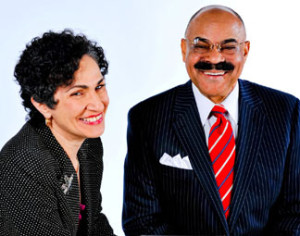
FUNdraising Good Times
NUSA Conference 2016
How to define goals and direction within volunteer-led organizations
We recently had the opportunity to facilitate a workshop at the 41st Neighborhood USA Conference (NUSA) in Memphis, Tennessee. Participants came from as far as Alaska and Japan. Memphis bustled with energy from these dedicated community activists, and the estimated $750,000 economic impact they made on the local economy. We caught the buzz, and want to share three topics that emerged from our conference session.
First, the majority of individuals who participated in our discussion were from organizations that do not have staff. These are board-led (or volunteer-led) organizations with limited fundraising experience. Participants wanted to know three things: who is responsible for setting goals and direction; how to get volunteers to buy into their work; and how to implement the prerequisites for fundraising success.
Setting goals and directions. Our experience has shown that without clearly defined goals and direction an organization can become reactive instead of proactive. When there is a CEO, that person should present proposed goals to the board for discussion. When an organization is volunteer-led the board chair – or another individual who demonstrates leadership – should take responsibility for stimulating this discussion. He or she should present clear, well-thought out, achievable priorities to the board. We suggest writing these priorities up in a short, concise document. No more than one page. Two paragraphs and a bulleted list should suffice. This will give the board an initial idea to respond to.
Securing buy-in. The person who presents the concept should not to be tied to how the board ultimately responds. What you – as an organization – want is mutual discussion and agreement regarding goals and direction. Give everyone time to review the initial concept document before the meeting. The person who has crafted the document should go into the meeting with an open mind. He or she is a catalyst who will provide the board with an opportunity to deeply discuss the concept, and make changes so it best articulates the group’s priorities. Through this process of discussion and involvement you will define your goals and directions. The key is this: no board should be expected to buy into a concept and rubber stamp it without discussion. This is not buy-in, and it rarely turns into sustained support. A meaningful board will want to discuss and share their thoughts. Everyone needs an opportunity to participate. Don’t confuse a “yes board” with a “strong board.”
Implementing the prerequisites. During the workshop we talked about the prerequisites for fundraising success. Participants wanted to know how an all volunteer organization should implement these. Our response: these are guidelines. Take the time to read our book by the same name, and have a person – or team – take responsibility for each of the prerequisites. These should be developed, put in place, monitored, and reviewed. Most importantly, remember that everything doesn’t have to be done at once.
Bottom line: Whether you are an all volunteer organization or one with staff, fundraising is a systematic process that requires constant attention to detail. Copyright 2016 – Mel and Pearl Shaw
Mel and Pearl Shaw are the authors of Prerequisites for Fundraising Success available on Amazon.com. For help growing your fundraising visit www.saadandshaw.com or call (901) 522-8727.



Be the first to comment